Iguanas, Part I
Notes from the Editor: Our guest author, Byron D. Augustin, returns... this time with a treatise on a ubiquitous animal that you can find throughout Yucatan. Iguanas will be at the haciendas and archaeological zones, they will be in your back yard, on your roof and occasionally at the feet of your very proud dog. Iguanas are like the squirrels of the Yucatan, only scalier. All photos by Byron D. Augustin, with the exception of the banner photo, which was taken by James Fields.
Introduction to Iguanas
My first visit to the Yucatan was in 1978, almost 40 years in the past. I brought a group of twenty-eight students on a study abroad program. Most of the students were farm kids or were raised in small rural towns in Missouri and Iowa. Not a single student had ever visited Mexico, and certainly none had ever seen an iguana. I had been to Guadalajara and some of the border towns, but was unfamiliar with iguanas. We arrived in Merida on an Aeromexico flight and stayed in the Hotel Colon on Calle 60 near the Plaza Grande downtown.
Early the next morning, we departed for Uxmal. In those days, visitors were permitted to climb the Pyramid of the Magician. After securing our tickets for admission, we headed straight for that glorious piece of architecture. A large iguana was sunning himself on a pile of rocks along the way. His reverie was interrupted by the noisy students and he took off for a rock wall at full speed. The girls screamed at the top of their lungs, while three big farm boys took off in hot pursuit.
The iguana plunged into a rock crevice, but unfortunately, he left a part of his tail hanging outside of his hiding place. One of the big farm boys from Iowa ripped off his T-shirt, wrapped it around the iguana’s tail, planted his feet, and started tugging with considerable force, trying to dislodge the poor creature. In retrospect, I believe the boy was a little like a dog that chases a bus, not thinking ahead about what to do with it if he catches up with it. If he had been successful in extracting the iguana, what was he going to do with it? He could have been bitten or scratched and in need of medical attention, and we were a long way from the nearest doctor.
Fortunately, as he braced himself and gave a firm tug, the iguana’s tail broke off and the boy lost his balance and landed on his rump, while approximately a foot of tail flew out of his hands and landed right in front of the group. The tail began twisting back and forth and flipping on the ground. The girls once again screamed like banshees, and the group scattered like a covey of quail. After gathering our wits, we decided to leave iguanas alone and focus on the Maya ruins. However, the experience had piqued my interest in iguanas, which led to the desire to learn as much about them as possible.
Over the years, I have continued to return to the Yucatan with student groups. Since that first visit, I have always advised them to leave the iguanas alone. I also have consistently attempted to take as many good photos of iguanas as possible and have built up a decent collection of images over the years. I used our university library as an academic source of information and continued to build knowledge about what I consider a very unique reptile. Iguanas became a bit of hobby for me. Eight years ago, my wife and I purchased a home in Valladolid and, lo and behold, we found we had moved to iguana heaven!
Vallazoo
In 2016, the Beutelspacher family developed a new zoo on the outskirts of Valladolid. The zoo is easy to find whether you are arriving from Cancun or Merida. Take the Valladolid exit from the autopista (the cuota road), turn right at the first overpass and roundabout, and drive approximately 300 yards. An agave azul (blue agave) distillery is on the right and the Vallazoo is on the left.
Walking paths at the zoo allow visitors to stroll leisurely through the animal exhibits. A friendly staff of 16 employees provides excellent care for the animals as well as guided tours if requested. Of course, I was immediately attracted to the iguana enclosures. One enclosure features females only and the other is for males. The sexes are separated to keep the males from fighting over the girls, which can lead to nasty bites that may become infected. Additionally, the zoo has nearly 300 iguanas and does not need to add to that number with baby iguanas that require a lot of care.
The zoo has been a godsend to me as I prepared to write this article. I met twice with Erika Buetelspacher, the founder’s daughter. Erika served as my interpreter while talking to Jonathon Josue Navarro Fonseca, the zoo’s director. Jonathon has been a veritable fountain of information. He earned a biology degree from Universidad Autonoma Metropolitana-Unidad Xochimilco, where he received professional training in the management of natural biotic resources. He has also had experience monitoring turtles on the beach at Escobila, Oaxaca, as well as serving as a collaborator in the area of animal welfare at the Coyotes Zoo in Mexico City. He monitored shorebirds and their social participation at the Intercultural Center for Studies of Deserts and Oceans at Puerto Penasco, Sonora. His final experience before moving to Valladolid was as a Technical Officer at Champoton Municipality, Campeche, where he monitored habitat and species of the local area regarding sustainable use. Since September 2016, he has served as the Director General of Vallazoo. Here, his major responsibilities are quality care for the zoo’s animals, as well as raising public awareness of the importance of conserving the zoo species and their habitat.
The Iguana Whisperer
I liked Jonathon immediately and he graciously assisted my research by holding both a female and a male green iguana as we examined almost all of these reptiles’ physical characteristics. We pried open their mouths and looked at their teeth and tongue. We turned them over and studied their sexual organs. We studied their eyes and ears and special features I had never heard of. He held their legs tightly so I could take a close look at their toes and claws. Jonathon was patient and gentle with both iguanas, including tolerating some stinging slaps from the tail of the female iguana.
I tried to imagine what might be going through these iguana’s brains. Did they think I was an alien who arrived in a spaceship (silver Honda CRV) and violated their privacy with these very personal physical exams? Probably not. Jonathon patiently answered every question and turned the iguanas in any position I requested for photos. In the end, both iguanas relaxed and seemed to be comfortable with our presence. I decided that Jonathon is truly an “iguana whisperer.”
A Bad Reputation
Many people seem to dislike iguanas and describe them as creepy, ugly relics from prehistoric times. Those people may be victims of a common phobia called herpetophobia or a fear or aversion to reptiles. On the other hand, I find iguanas quite interesting. To me, they seem to have an air of nobility. They are not noisy neighbors and seem to leave you alone if you leave them alone. When I look at their photos, I swear I saw some of them in the Mos Eisley Cantina with Han Solo and Chewbacca on the planet Tatooine.
Iguanas are reptiles, which means they are cold-blooded. Like snakes, they get a bad reputation because they feel cold to the touch, a marked contrast to mammals that are warm blooded. In reality, most people do not know much about iguanas and ignorance always enhances prejudice. Ignorance may explain the fact that iguanas frighten many people.In contrast, I feel iguanas are worthy of respect. Iguanas, after all, are capable of inflicting painful bites and scratches with their teeth and claws. They can also give you a nasty spanking with their powerful tails. Still, if you respect their space, the odds that they might attack you are miniscule.
Iguana Species
While there is some disagreement on the number of species of iguanas in the world, 35 different species seems to be the number most commonly agreed on by the scientific community. Iguanas are part of the Animalia Kingdom, the Reptila Class and the Iguanidea Family according to most taxonomists. There are three noted species on the Yucatan Peninsula and two minor species in Campeche and Quintana Roo.
Black and Green
The Black Spiney-tailed Iguana (Ctenosaura similis) species has the largest numbers and range of distribution in Yucatan. They are found in the hottest and driest parts of the Yucatan Peninsula and are especially fond of rocky, dry environments. This helps explain their proclivity to Maya ruins. Uxmal, Chichen Itza, and Ek Balam are great sites for spotting this species. While they come in many sizes, adult males usually reach a length of three to four feet and weigh three to five pounds. The females of this species are smaller both in length and weight. Shades of blacks and greys are their normal colors, but some have patches of yellow, brown and almost white.
Green iguanas (Iguana iguana) are found primarily in the tropical wet areas of eastern Yucatan in more heavily forested environments. They prefer to spend most of their time in the canopies of trees, sometimes basking in the sun more than 40 feet above the ground. They are the largest iguanas in Mexico and can reach a length of more than six feet, while weighing as much as 18 to 20 pounds. Normal weights are more likely to be six to eight pounds for males and four to six pounds for females. When the green iguanas hatch, they are mostly green, but as they mature pigments in the skin cells can create areas of their bodies which are blue, yellow, black, brown and orange. Mature male green iguanas may turn bright orange during the mating season.
The Yucatan Spiney-tailed Iguana (Ctenosaura defensor) is endangered. It is the smallest iguana in the Yucatan, seldom measuring more than ten inches in length and weighing a few ounces. It is also the most beautifully colored of the Yucatan iguanas, which may account for its endangerment. The colors are mottled over the surface of the iguana and include black, red, blue, yellow, and brown. Biologists estimate that there are less than 5,000 of these iguanas left in a very small area of habitat in northern Yucatan. Their future is not bright because of loss of habitat and unscrupulous individuals who hunt them to sell to pet shops.
Iguanas as A Source of Food
Would you eat iguana meat? I probably would eat iguana meat, but I have not done so yet. That positive answer is based on a lifetime of travel to countries with much different cultures than where I was raised. Growing up on a farm in Nebraska, my diet consisted mostly of fried chicken, baked ham, grilled T-bones mashed potatoes, corn-on-the-cob, green beans, bacon and tomato sandwiches and apple pie. My diet was standard midwestern cuisine. Most people I know would never eat the meat of lizards, snakes, frogs, kangaroo, ostrich, monkey, Cape buffalo, and guinea pig. Yet, I have eaten the meat of all of these examples and enjoyed the taste of every one of them with the exception of monkey and guinea pig. And people in other parts of the world eat these meats as commonly as we eat beef and pork.
The Yucatan Maya have eaten iguana for more than a millennia. Iguana bones have been found at many pre-classic sites by archaeologists along with deer, turkey, peccary, and fish bones. The Maya used iguana meat in tamales and stews, but roasting the iguana over a fire was the most common cooking technique. The majority of iguana bones at ruin sites showed darkened bone color caused by exposure to fire. When the Spanish arrived on the Yucatan Peninsula in the early 1500s, the Maya introduced them to iguana meat and many Spaniards quickly acquired a taste for what Spanish chronicles described as a delicacy.
Religious Interpretations
Spanish consumption of iguana meat was impacted considerably by religious teachings. Most Spaniards were Roman Catholics. The Catholics were taught to follow the teachings of the Bible. In the Old Testament book of Leviticus, Christians and Jews are told what animals they can eat and not eat. Regarding lizards, they are told that this animal is unclean and they must not eat it. Consequently, Jews refused to accept iguana meat as kosher and do not eat them.
Spanish Christians introduced to the iguanas of the Yucatan began happily chomping away based on an interpretation decree by Saint Tomas Aquinas in the 13th century. In this decree, Aquinas defined meat as coming from warm-blooded animals that lived and breathed on the earth. Fish, however, were identified as non-meat that lived in water and were cold blooded. Reptiles and amphibians were fish according to the church’s classification and even though not all of them lived in water, they were indeed cold blooded. Close enough! Several chapters in the New Testament support an interpretation that if an animal was created by God and received with thanksgiving, it is clean and can therefore be eaten. This interpretation was especially important on Fridays and during Lent when Catholics fasted and abstained from eating meat. Iguanas became popular “non-meat” during those fasting periods. In Nicaragua today, the consumption of iguana meat skyrockets during Lent when Catholic Nicaraguans prepare a popular soup, called sopa de garroba (iguana soup). The fact that this soup is believed to cure hangovers, have sexual-boosting properties and improve strength and endurance only exacerbates the problem.
Cultural Diffusion of Iguana
The Spanish introduced iguana meat to Europe, and those with an educated palate willing to try a new taste described the culinary experience as memorable. Gonzalo Ferdinand de Oviedo (1478-1559), a noted Spanish historian, testified to its delicious taste, and insisted that it was better than the best Spanish rabbit. French writers in the 17th century described banquets featuring iguana for gourmets whose palates were thoroughly educated and lacking prejudices. And tasting these delicious reptiles was even recommended by the Larousse dictionary. One writer wrote, “that the iguana’s flesh had the same whiteness, tenderness, and the exquisite taste of that of a chicken.” The British author, Sir Osbert Sitwell (1892-1969) stated, “that the saddle or front shoulder of iguana is as white and tender as the best capon and the eggs, too, are a suitable and, even delicious concomitant”.
Mixing Science and Religion
Maya science was profound when compared to other pre-Columbian civilizations. For example, within the animal kingdom, the Maya defined vertebrates into four categories based on how they moved from point to point. Mammals like deer were designated as 'walkers', reptiles and amphibians were 'crawlers', birds and bats were 'flyers' and fish were 'swimmers'.
After the Classic period ending in approximately 900 A.D., written codices describe religious offerings featuring a deer, iguana, turkey, and fish. Maya taxonomists did not buy into Saint Tomas Aquinas’s later explanation that iguana were fish. These offerings also depicted directions, which were essential to Maya astronomy.
Deer, a mammal, represented east. The west offering was the iguana, a reptile. The north offering was a turkey, a bird, and finally a fish represented the south.
As a side note regarding religion, Muslims divide animals into two categories for diet choices. Halal are animals that are permissible to eat and Haram are animals that are not permissible to eat. Both iguana and lizards are Haram and should not be eaten. Yet, desert Bedouin, who are Muslims in North Africa and the Arabian Peninsula, eat Dhab lizards and Monitor lizards, which they refer to as “desert chickens”.
In Latin America, more iguanas are eaten on the Caribbean islands than any other part or the region. It is not uncommon to hear islanders call iguana “bamboo chicken" or "tree chicken,” although they add that iguana meat is a little sweeter and slightly more rubbery to chew.
****
Want to know more? In Part II of this series on iguana we focus on the physical characteristics, which help make iguanas so interesting. And Part III tells us all about iguanas habits and habitats.




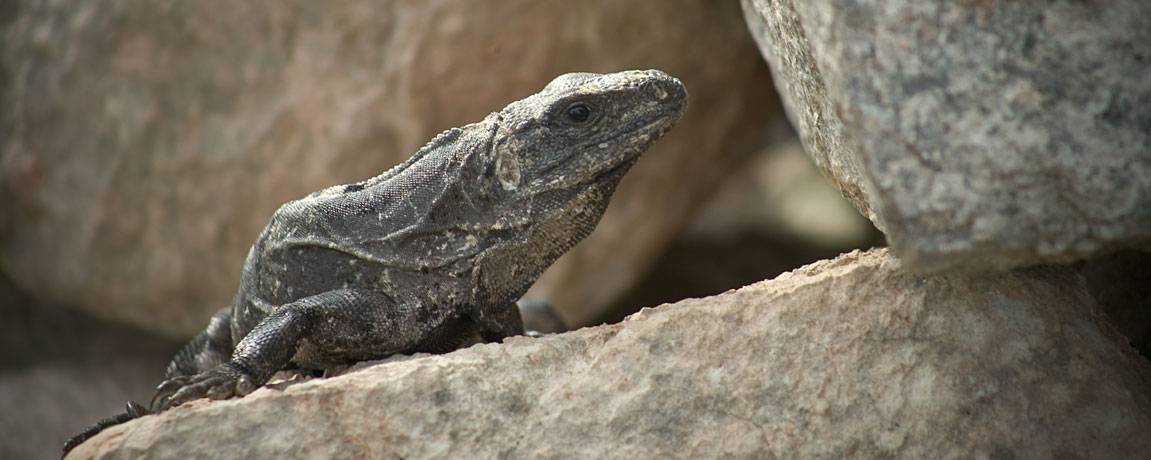

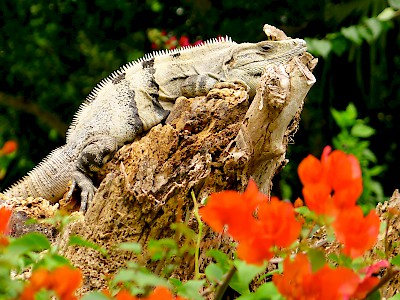
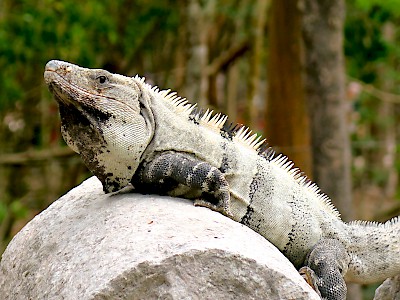
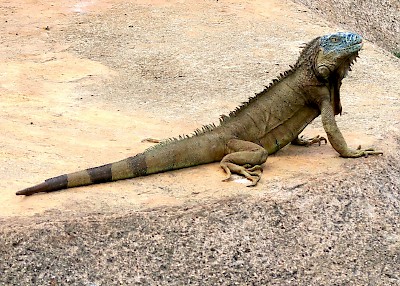

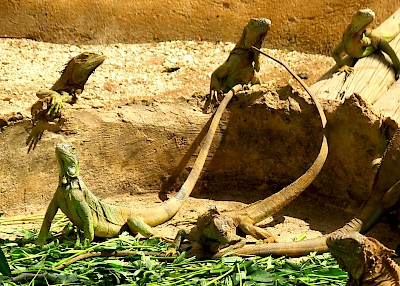
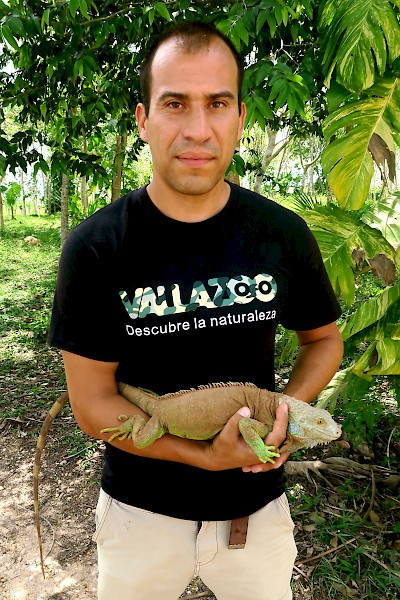
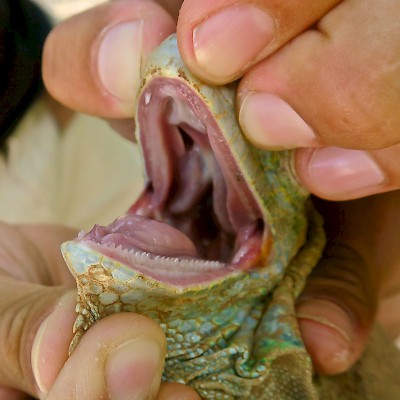
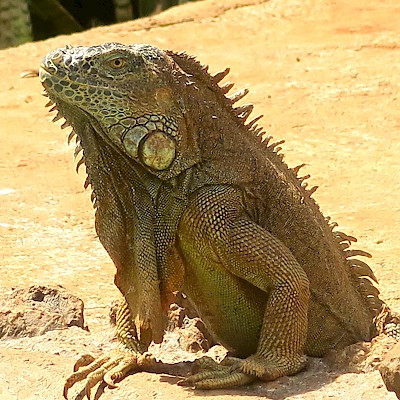
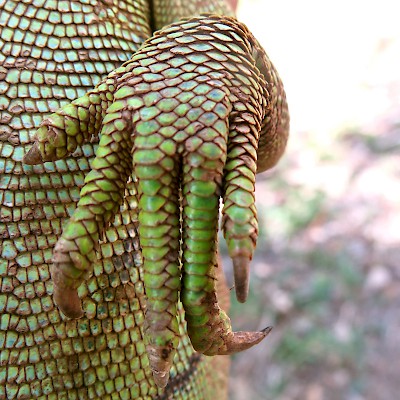
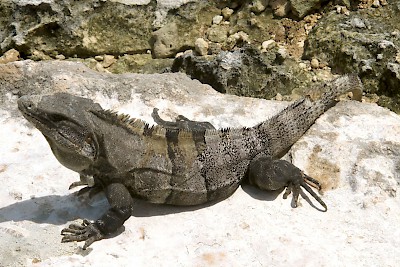
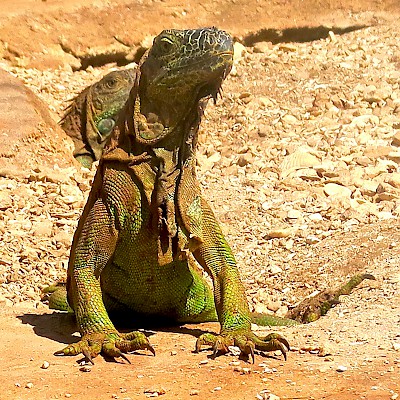

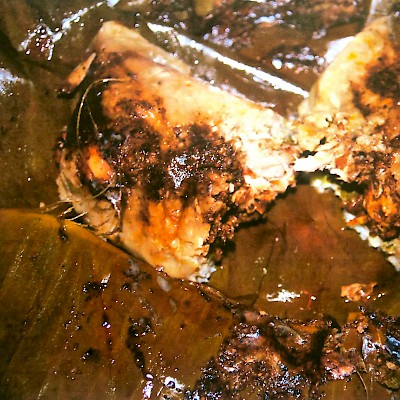

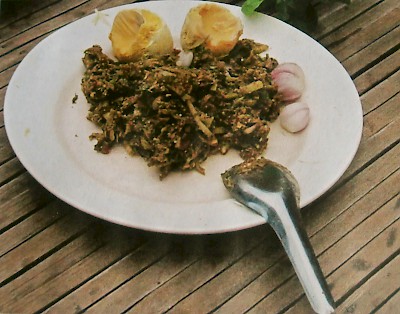
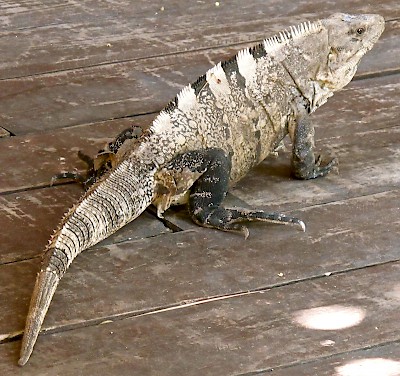
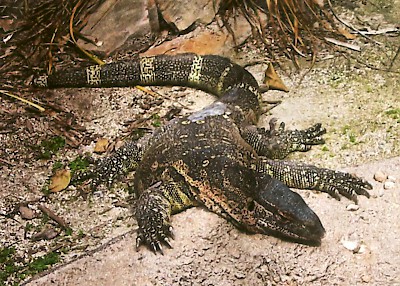

Comments
sharron 8 years ago
How do I keep iguanas from eating my flowering plants. I have tried many times to grow bougainvillea, flor de mayo and mandevile without success. I have a family of these iguanas in my backyard and need to know (1) can I get rid of them and (2) if I can't get rid of them how do I keep them away from my flowering plants.
Reply
Kara 9 years ago
We have a rather large iguana in our back yard. For the most part we ignore each other, but when he caused the death of a beloved cat(she was about twenty) I developed a nasty grudge and waned him GONE! He retaliated by calling in reinforcements so there was always someone protecting the tunnel entrance when I attempted to seal him out of it. We have seen up to five back there at once (par-tay!). I'm not happy he's there but it makes my house in Centro somewhat unique.
Reply
Byron Augustin 9 years ago
Kara:
I am sorry to hear about your cat. It is a shame that she lived to almost 20 years and had to pass in such an unpleasant manner. Our cat tangled with a less mature iguana than yours and managed to knock him into the swimming pool in February, which took the fight out of him and I evicted him to a vacant lot. The big iguanas pose a threat for small household pets. Thank you for your comments.
Byron Augustin
Reply
(0 to 3 comments)